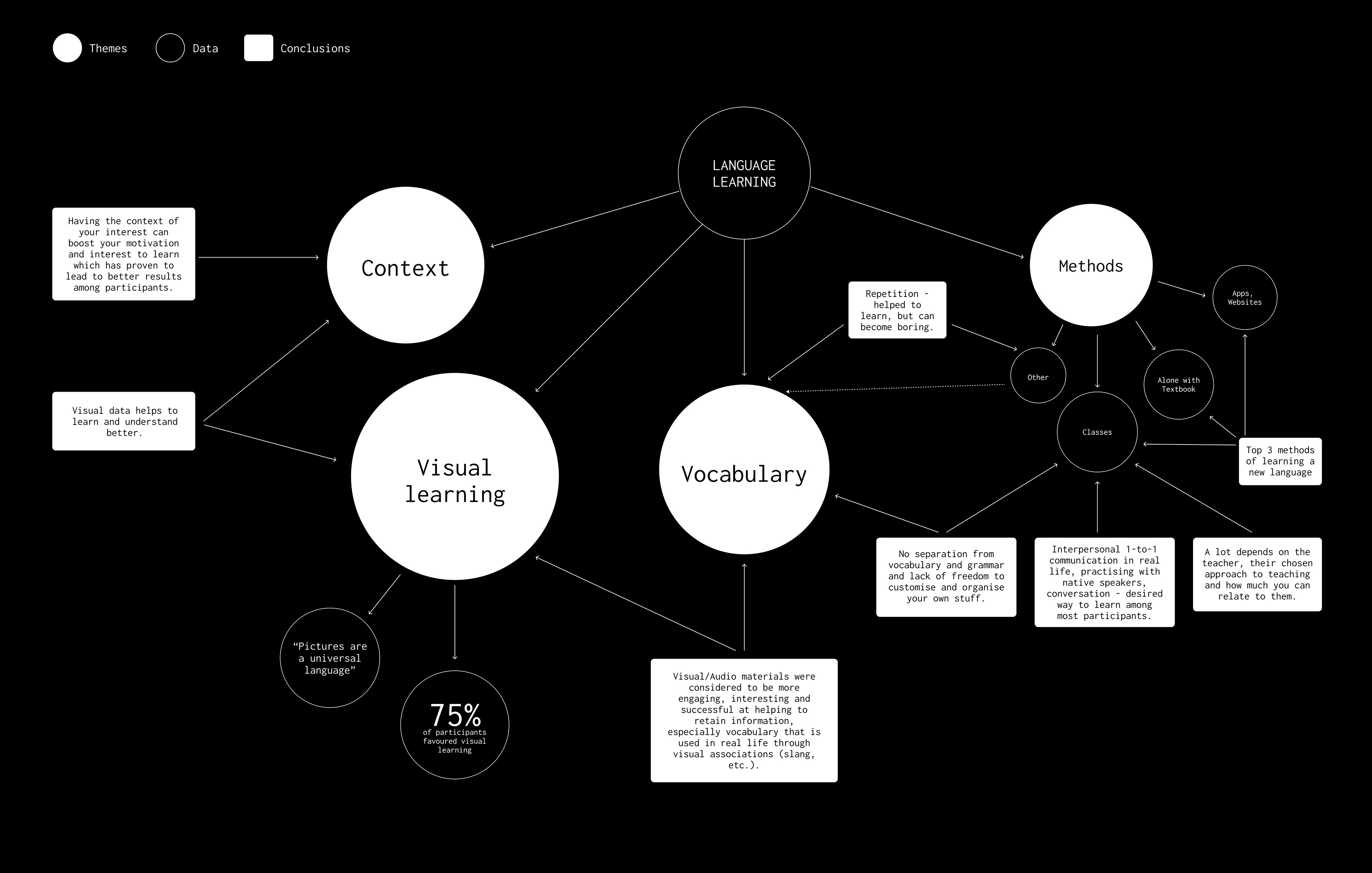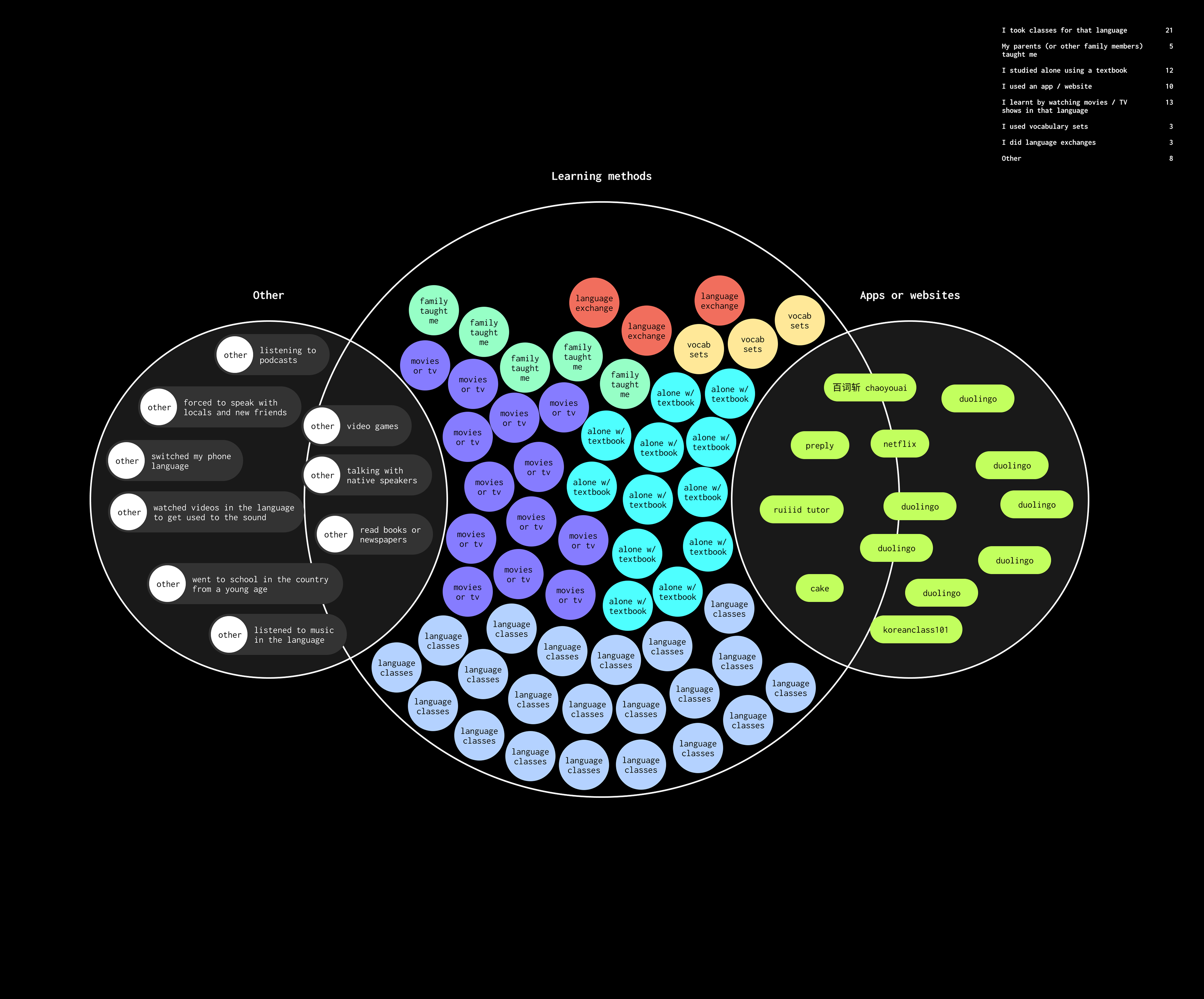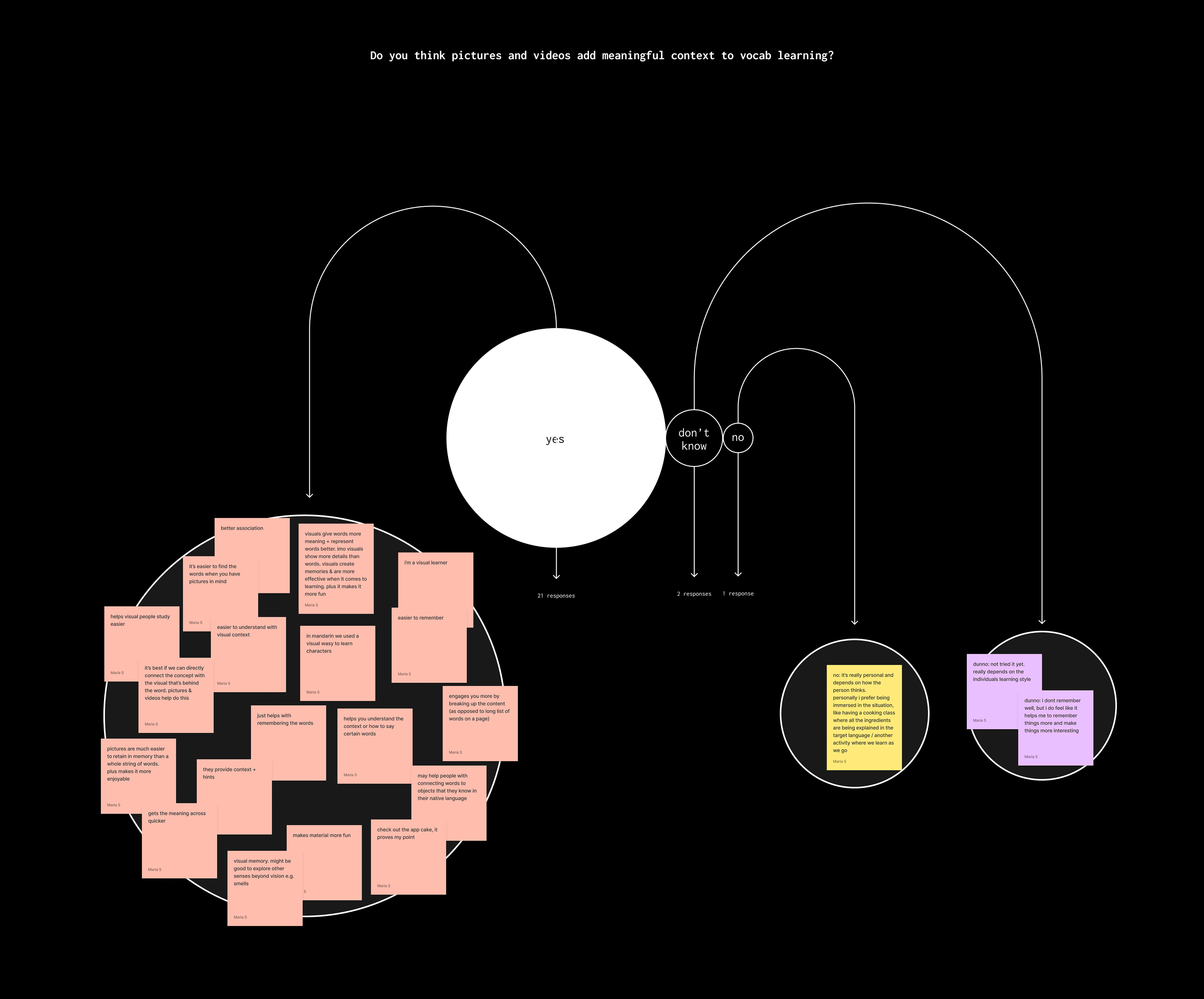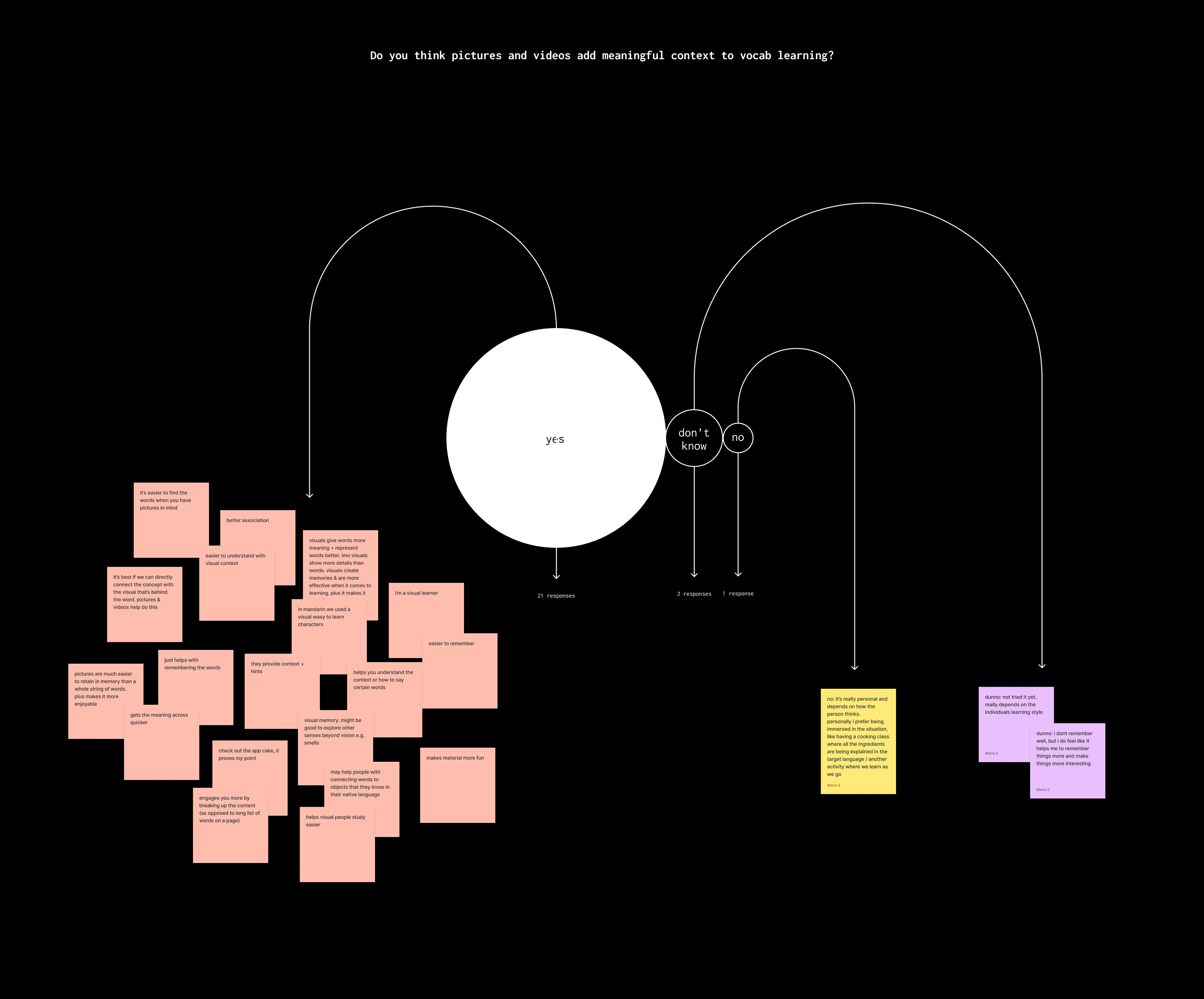August 2021
Group: Tatiana Bohsali, Maria Shuttleworth
Group: Tatiana Bohsali, Maria Shuttleworth
In parallel with our desk research, we decided to gather some more information and get ourselves more familiar with what is happening in the present. Our secondary research gave us a lot of useful insights and equipped us with relevant theories on language learning, visual context, motivation, methods, etc. However, at that point, we still had many unanswered questions such as who exactly is our target audience and where would visual language learning live in the world. Therefore, we wanted to start exploring the practical part more to see what the people next to us think, use and have in mind about language learning. Therefore, Maria created a short questionnaire to start getting some answers and certainties in the project. Questionnaires are helpful as a first step to collecting "self-report information from people about their characteristics, thoughts, feelings, perceptions, behaviours, or attitudes".
The questionnaire consisted of different questions that aimed to give us more information about what methods people use to learn a new language, what they like/dislike about them as well as their opinion on how visuals contribute to progress.



Screenshots of the questionnaire created by Maria. Screenshots by Maria.
As a result, we managed to synthesise all of the information provided by the questionnaire into a set of key statements that were supported by most/all participants.

Data Synthesis of our questionnaire. Diagram and synthesis by me.
We found that the 3 most preferred methods of language learning are classes, studying on your own with a textbook and through digital platforms such as apps and websites.

Learning methods diagram. Created by Maria.
A lot depends on the teacher, their chosen approach to teaching and how much you can relate to them. This was emphasised by the participants who wished they had a different teacher, or who said how interested they were in lessons because they saw the contagious passion for the language in their teachers. Some mentioned certain fun techniques that helped the process, some highlighted that the teacher would only use textbooks which made it boring.
Having the context of your interest can boost your motivation and interest to learn. As said by one of the participants "familiarity makes tasks less daunting, thus making them seem more achievable".

Responses on having context you are interested in when learning. Diagram by Maria.
Visual/Audio materials were considered to be more engaging, interesting and successful at helping to retain information, especially vocabulary that is used in real life through visual associations (slang, etc.). TV shows, YouTube videos are said to be more engaging and more immersive. and sometimes people would unconsciously use the new words or sentences they heard when a similar situation or scenario happens in real life. Someone also referred to imagery as a universal language that is understandable to everyone, which we found very interesting and relevant to what we wanted to do.




People's responses on having videos/images when learning a language. Diagrams by Maria.
As a result, we gathered a lot of useful data. We managed to confirm our belief that visuals are very important when learning a language and that a lot depends on the way you do it. But we were still unable to determine how and for whom would that be most beneficial, in what case and situation. How exactly would we bring visuals in the most effective way into the existing equation of language learning? Therefore, we continued our exploration...
BIBLIOGRAPHY
Martin, B. and Hanington, B., 2012. Universal methods of design. Beverly, Massachusetts: Rockport Publishers.